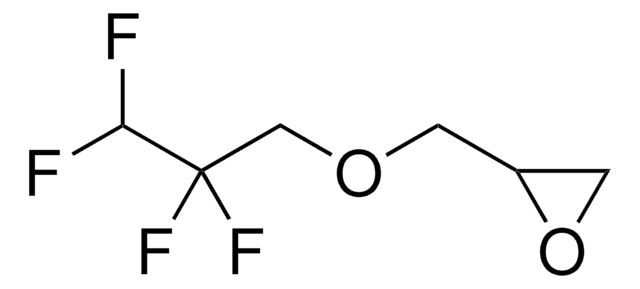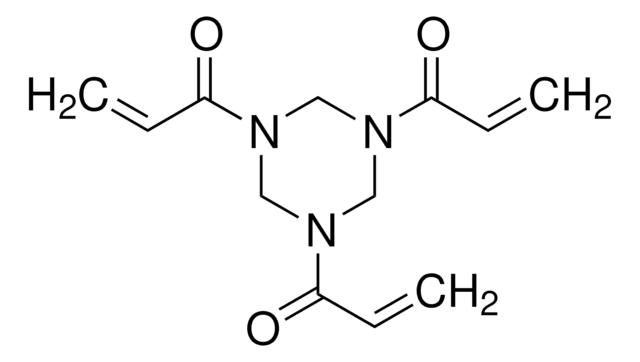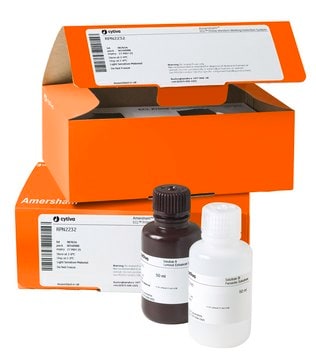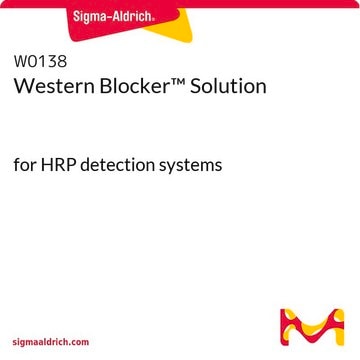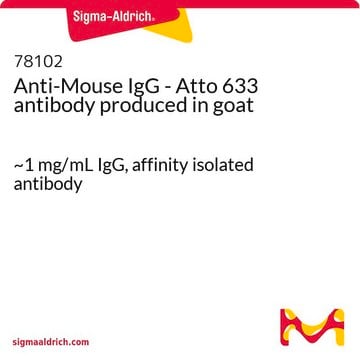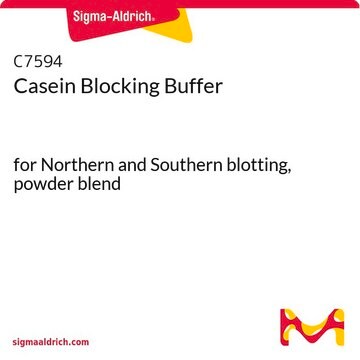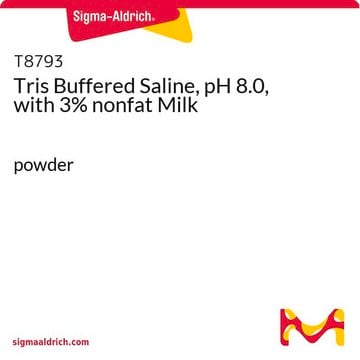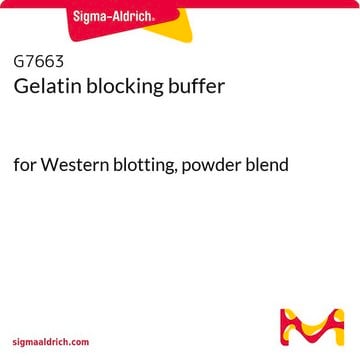WESTBL-RO
Roche
Western Blocking Reagent, Solution
solution, sufficient for 10 blots (11921673001 [100 cm2]), sufficient for 60 blots (11921681001 [100 cm2])
Sinónimos:
blocking reagent for western blots
About This Item
Productos recomendados
formulario
solution
Nivel de calidad
uso
sufficient for 10 blots (11921673001 [100 cm2])
sufficient for 60 blots (11921681001 [100 cm2])
envase
pkg of 100 mL (11921673001)
pkg of 6 × 100 mL (11921681001)
fabricante / nombre comercial
Roche
temp. de almacenamiento
2-8°C
Categorías relacionadas
Aplicación
Calidad
Forma física
Nota de preparación
- Tris buffered saline (TBS), pH 7.5
Note: Since sodium azide inhibits POD, it must not be used as antimicrobial agent when using POD-conjugates.
- TBS-Tween (TBST)
Note: 0.1% Tween 20 is suitable for the most applications, but—depending on the membrane and on the antibody used—different detergents (like SDS, Triton X-100 and Nonidet P40 and detergent concentrations from 0.01 to 1% may lead to better results.
- Blocking solution (1%)
Note: Since sodium azide inhibits POD, it must not be used as antimicrobial agent when using POD-conjugates.
- Blocking solution (0.5%)
- Antibody solutions
Note: The concentration of the blocking reagent is an important parameter for improvement of the signal to noise ratio in Western blots. If high background appears even under optimized antibody concentrations, increase the concentration of the blocking reagent during the antibody incubations and washing steps from 0.5% to 1%. In case of weak signals even with prolonged antibody incubations lower the concentration of blocking reagent during the antibody incubations and washing steps from 0.5% to 0.1%.
Otras notas
Código de clase de almacenamiento
12 - Non Combustible Liquids
Clase de riesgo para el agua (WGK)
WGK 1
Punto de inflamabilidad (°F)
does not flash
Punto de inflamabilidad (°C)
does not flash
Certificados de análisis (COA)
Busque Certificados de análisis (COA) introduciendo el número de lote del producto. Los números de lote se encuentran en la etiqueta del producto después de las palabras «Lot» o «Batch»
¿Ya tiene este producto?
Encuentre la documentación para los productos que ha comprado recientemente en la Biblioteca de documentos.
Los clientes también vieron
Nuestro equipo de científicos tiene experiencia en todas las áreas de investigación: Ciencias de la vida, Ciencia de los materiales, Síntesis química, Cromatografía, Analítica y muchas otras.
Póngase en contacto con el Servicio técnico